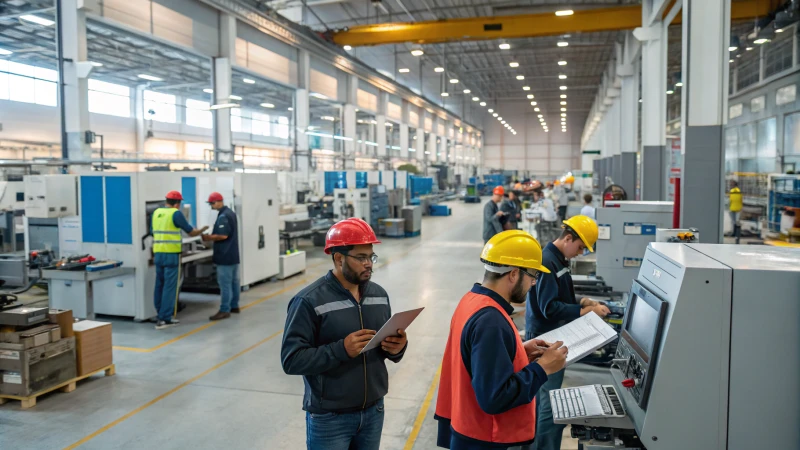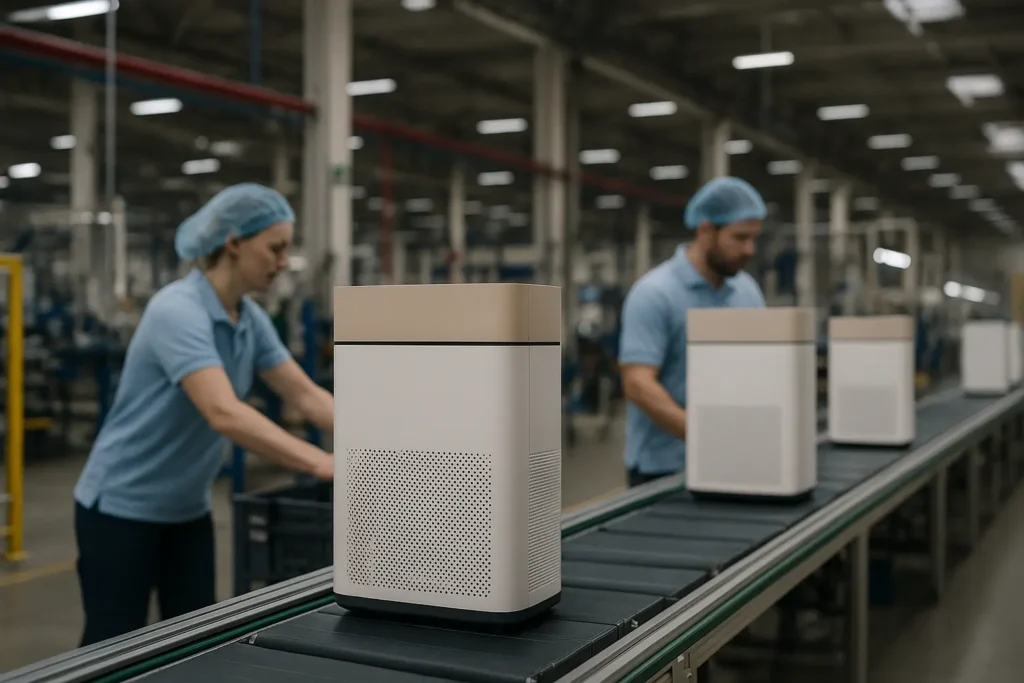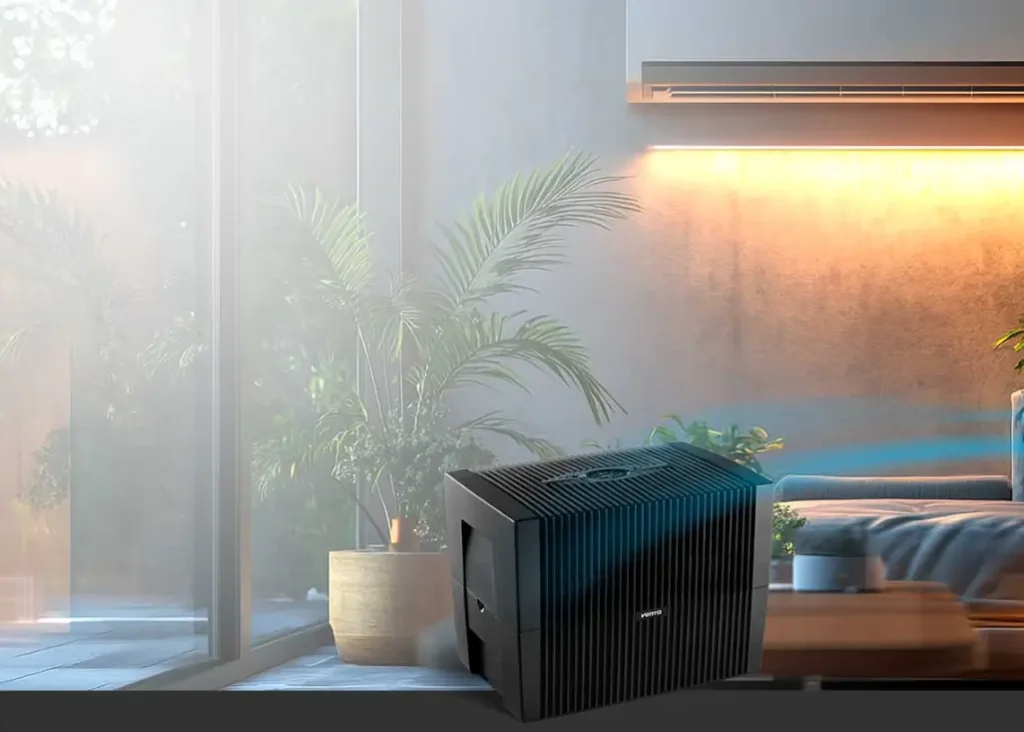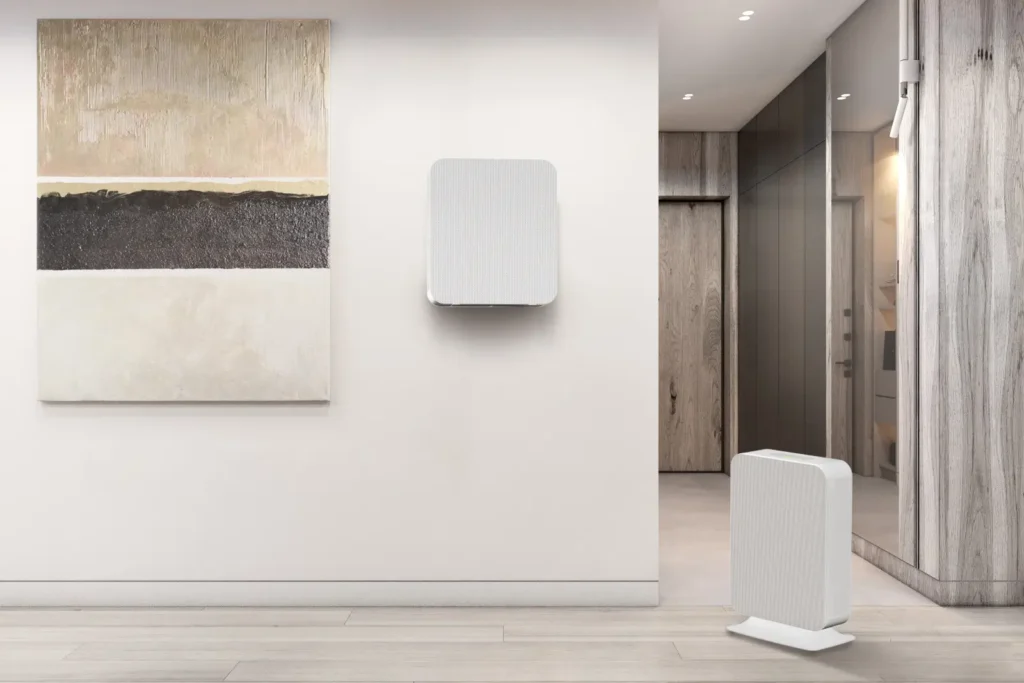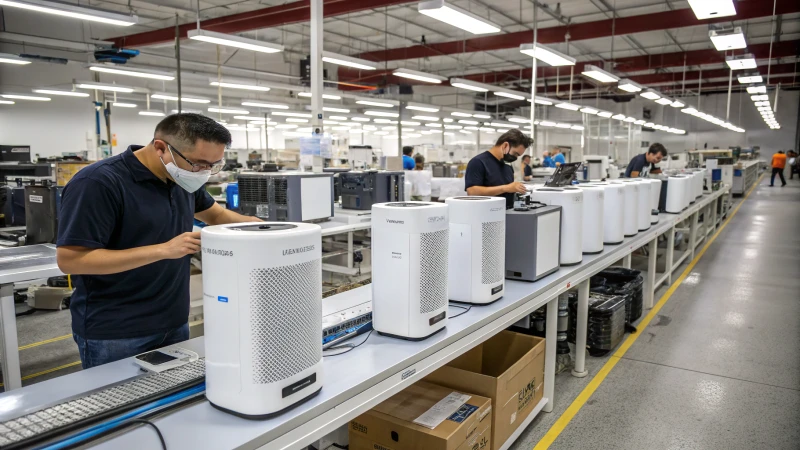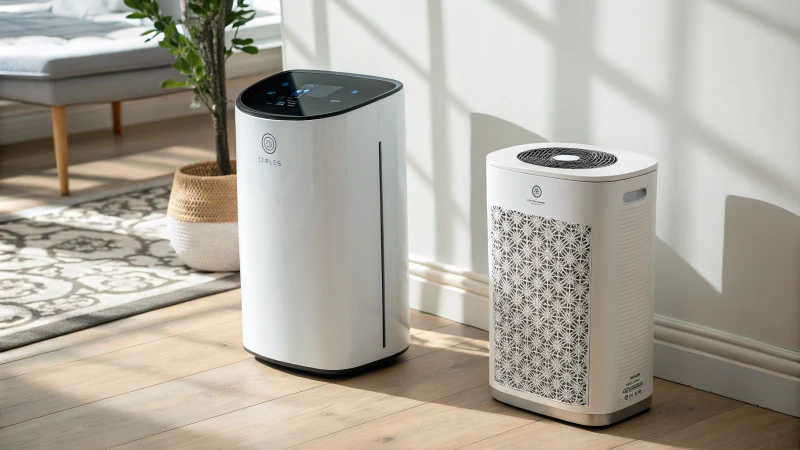
Меня всегда интересовала борьба с грязным воздухом. Этот интерес возрастает при поиске лучших аппаратов для очистки воздуха. Китай и Пакистан изо всех сил стараются создать лучшие воздухоочистители. Кто из них лидирует?
Китай доминирует в производстве воздухоочистителей благодаря своим передовым технологиям и мощным заводам. Пакистан становится его конкурентом. Этот рост обусловлен растущим местным спросом и тесными связями с китайскими производителями.
После многих лет изучения очистки воздуха я знаю, что Китай лидирует в области технологий и производства. Преимущество Китая уникально. В то же время быстрорастущий рынок Пакистана и хорошие торговые условия открывают широкие возможности.
Однажды я посетил Пакистан и увидел высокий спрос на решения для очистки воздуха. Это был явный признак того, что там существует серьезная проблема качества воздуха. Сейчас люди больше понимают эту проблему. Рост осведомленности может привести к увеличению местного производства в Пакистане. Давайте посмотрим, чем отличаются эти страны в плане новых идей, затрат и рыночных возможностей.
Китай лидирует в области технологий очистки воздуха.Правда
Передовые технологии и инфраструктура Китая поддерживают его лидерство.
Пакистан превосходит Китай по производству воздухоочистителей.Ложь
Благодаря развитой производственной базе Китай опережает Пакистан.
Как качество воздуха влияет на спрос на воздухоочистители в Китае и Пакистане?
Помню первый день, когда я понял, насколько важен чистый воздух. Улица в Пекине казалась живой, наполненной людьми. Воздух был густым, почти осязаемым. Многие люди в Китае и Пакистане сейчас осознают то же самое. Это действительно важно.
В Китае и Пакистане плохое качество воздуха значительно увеличивает потребность в воздухоочистителях. Теперь люди больше знают о том, как загрязнение вредит здоровью. Очистители воздуха кажутся важными для поддержания здоровья в доме. Действительно, очистители воздуха кажутся важными.
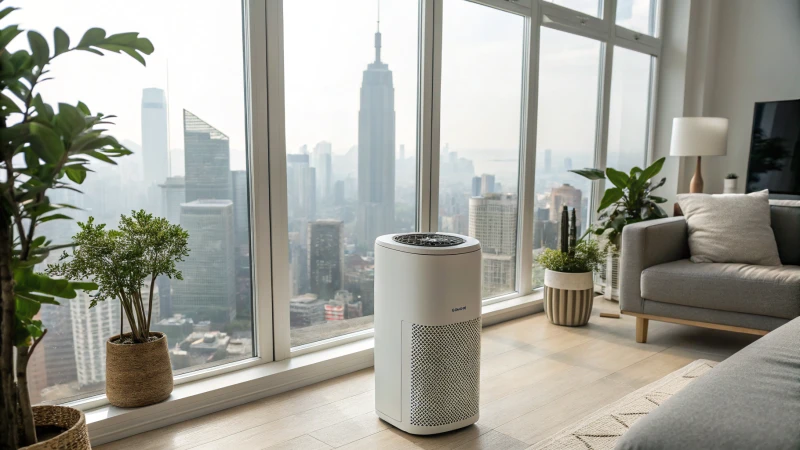
Роль загрязнения воздуха в спросе на автомобили
Посещение таких городов, как Пекин и Лахор, показывает, почему очистители воздуха стали обычным явлением в домах. Стремительный рост промышленности в Китае приводит к загрязнению воздуха, вызывая опасения за здоровье людей. Наблюдение за затянутым смогом горизонтом наглядно демонстрирует острую необходимость в очистителях воздуха. На сайте Правительство Китая1 также проводит политику по борьбе с загрязнением воздуха, что еще больше влияет на поведение потребителей.
В Пакистане история с воздухом имеет свои особенности. Друзья рассказывают о густом смоге, затрудняющем дыхание. По мере усугубления проблем люди все больше узнают о необходимости чистого воздуха в помещениях. Потребность в очистителях воздуха для дома постоянно растет, и решающую роль в этом играют кампании по повышению осведомленности населения.
Экономические факторы, влияющие на рынок
Китай производит более 70% воздухоочистителей в мире. Однако тарифы и другие экономические проблемы заставляют некоторых задуматься о переносе заводов. Коллеги упомянули Вьетнам и Малайзию в качестве новых возможных мест расположения, вызванных торговыми проблемами.
Пакистан представляет собой подходящий вариант для переезда благодаря растущему рынку и благоприятным отношениям с Китаем. Строительство местных заводов может изменить экономику страны. Однако необходимость импортировать из Китая такие важные детали, как вентиляторы и платы PCBA, может замедлить прогресс.
| Страна | Динамика рынка воздухоочистителей |
|---|---|
| Китай | Ведущий производитель; проблемы с тарифами |
| Пакистан | Растущий рынок; зависимость от импорта |
Озабоченность здоровьем и поведение потребителей
Заботы о здоровье часто определяют выбор потребителей. В Китае люди больше знают о плохом воздухе и хотят использовать передовые технологии, такие как Отмена децибел™2 для лучшего здоровья.
В последнее время в Пакистане быстро растет уровень загрязнения окружающей среды, что вызывает острую потребность у местных жителей. Быстрая продажа воздухоочистителей свидетельствует об этой потребности. По мере того как все больше людей узнают об этом, спрос на эти устройства в домах будет расти.
Потенциальные изменения на рынке
Перенос производства в Пакистан может изменить рынок, подобно тому, как новые возможности меняют отрасли в других странах. Местные заводы могут создавать рабочие места и развивать технологии.
Китай может счесть Пакистан привлекательным из-за его расположения и истории, но сначала ему необходимо решить проблемы с инфраструктурой и создать прочную цепочку поставок.
Те, кто интересуется этими изменениями, могут изучить связь между качеством воздуха и использованием технологий3 для более глубокого понимания меняющихся потребительских привычек и экономических изменений.
Китай производит более 70% воздухоочистителей в мире.Правда
Китай является ведущим производителем, выпускающим более 70% воздухоочистителей по всему миру.
Пакистан импортирует все компоненты для воздухоочистителей на местный рынок.Ложь
Пакистан импортирует из Китая такие ключевые компоненты, как системы вентиляторов и платы PCBA.
Почему Китай является лидером в производстве воздухоочистителей?
Знаете ли вы, почему люди часто выбирают Китай для производства воздухоочистителей? Китай занимает огромную долю мирового рынка - 70%. Этот выбор обусловлен эффективностью. Прочные цепочки поставок поддерживают производство. Технологическое мастерство также играет большую роль.
Китай лидирует в производстве воздухоочистителей. Эффективные цепочки поставок очень помогают Китаю. Доступное производство снижает затраты. Передовые технологии способствуют успеху. Из Китая поступает высококачественная продукция. Эта продукция продается по конкурентоспособным ценам.
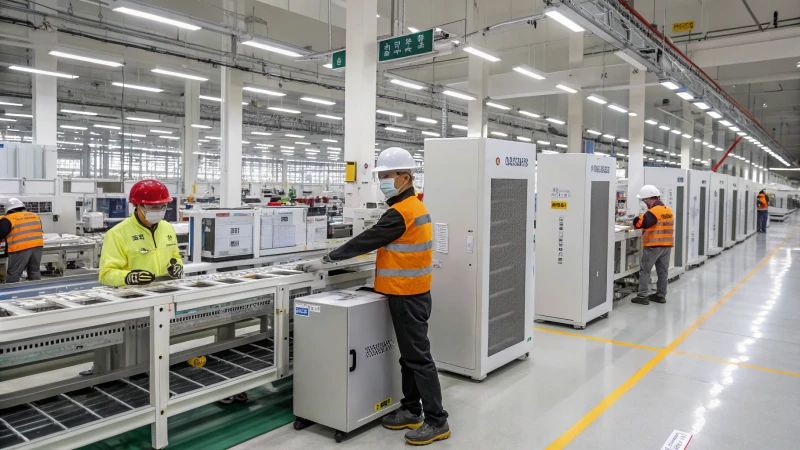
Эффективность затрат и масштабирование
Китай занимает лидирующие позиции в области технологий очистки воздуха благодаря экономичности. Страна выигрывает от эффекта масштаба, что позволяет производителям снижать стоимость единицы продукции. Поначалу я усвоил этот урок с трудом. В Китае это нормально, потому что у них много ресурсов, поэтому они производят больше при меньших затратах на единицу продукции.
| Фактор | Выгода |
|---|---|
| Экономия от масштаба | Снижение стоимости единицы продукции |
| Изобилие ресурсов | Снижение цен на сырье |
| Большая рабочая сила | Доступная стоимость рабочей силы |
Передовые технологии
Китай вкладывает значительные средства в исследования и разработки, что приводит к инновациям в технологии воздухоочистителей. Я восхищаюсь тем, как они используют в воздухоочистителях современные технологии, такие как IoT и искусственный интеллект. Такой высокотехнологичный подход делает устройства лучше и соответствует моей любви к инновациям.
- Интеграция IoT: Позволяет осуществлять мониторинг и контроль в режиме реального времени.
- Особенности AI: Прогнозирование качества воздуха и совершенствование устройств.
Это обязательство гарантирует, что китайские производители смогут предложить передовые продукты4 которые соответствуют международным стандартам.
Комплексная цепочка поставок
Я очень уважаю китайскую цепочку поставок: она работает настолько хорошо, что напоминает мне о том, когда все идеально выстроено. Поставщики и производители находятся близко друг к другу, поэтому они быстро получают детали, что сокращает сроки изготовления и минимизирует логистические издержки. Кроме того, государственная поддержка обрабатывающей промышленности еще больше укрепляет устойчивость цепочки поставок5.
Экосистема сотрудничества
Сотрудничество приносит успех. Я вижу это в мощной китайской сети, где технологические фирмы и фабрики работают вместе. Совместная работа позволяет создавать новые продукты и повышать их качество.
- Партнерство с производителями комплектующих: Обеспечьте быстрый рост и адаптацию продуктов.
- Технологическое сотрудничество: Приводят к инновациям и улучшению продукции.
Размышления об этих сильных сторонах напоминают мне о том, почему я выбрал профессию инженера по охране окружающей среды - желание внедрять инновации и улучшать качество воздуха движет мной ежедневно.
Китайские воздухоочистители используют IoT для мониторинга в режиме реального времени.Правда
Китайские производители внедряют технологию IoT для расширения функциональности воздухоочистителей.
В Китае отсутствует экосистема сотрудничества в сфере производства.Ложь
Китайское производство выигрывает от совместной экосистемы, способствующей инновациям.
Может ли Пакистан стать крупным игроком на рынке воздухоочистителей?
Представьте, что вы живете в городе, где каждый вдох кажется вам выхлопом автомобиля.
Пакистан обладает большим потенциалом, чтобы стать ключевым конкурентом в индустрии воздухоочистителей. Растущее загрязнение воздуха вызывает высокий внутренний спрос. Сильное загрязнение воздуха действительно увеличивает потребность в воздухоочистителях. Кроме того, изменения в производстве, происходящие в Китае, открывают дополнительные возможности для роста. Эти изменения открывают реальные возможности.
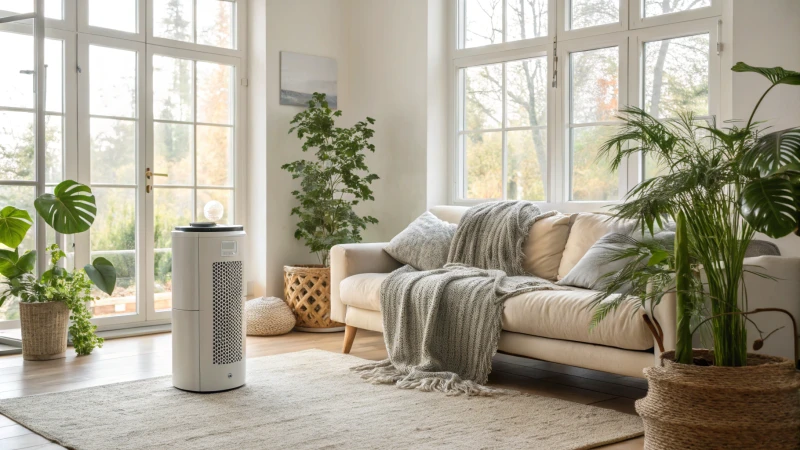
Растущая потребность в Пакистане
Я видел оживленные улицы Лахора и Карачи. Воздух кажется тяжелым. Загрязнение воздуха здесь - это не просто цифры, оно действительно влияет на повседневную жизнь. Уровень загрязнения продолжает расти. Многие люди хотят приобрести очистители воздуха. Я замечаю, что все больше семей в моем районе приобретают эти устройства. К такому выбору подталкивают проблемы со здоровьем. Это изменение свидетельствует об осведомленности и, возможно, о большом подъеме в местный рынок6.
Возможности производства
Глобальная торговля влияет на местные рынки. Китай лидирует в производстве воздухоочистителей, но сталкивается с тарифами США. Производители ищут новые места. Пакистан с его связями с Китаем становится очень интересным выбором.
| Страна | Текущая роль | Потенциал |
|---|---|---|
| Китай | Ведущий производитель | Перемещение заводов |
| Пакистан | Развивающийся рынок | Возможный центр производства |
Наша промышленность действительно может развиваться, если производство переместится сюда. Создание местного цепочка поставок7 создает препятствия, но эта идея интересна и заслуживает внимания.
Проблемы и размышления
Это нелегко. Наша инфраструктура не готова к производству таких деталей, как платы PCBA и системы вентиляторов". Один из местных предпринимателей поделился, что эти проблемы могут замедлить рост. Но с китайскими инвестициями я чувствую надежду. Мы сможем постепенно построить сильную местную промышленность".
Преимущества глобальных игроков
Для таких крупных компаний, как HisoAir8Приход в Пакистан - это выход на растущий рынок. Кроме того, они могут снизить производственные затраты. Их цели - устойчивое развитие и инновации, что соответствует этой идее.
Столкновение с подобными ситуациями - это сочетание шансов и проблем. При грамотном планировании и разумных инвестициях Пакистан может сыграть большую роль на рынке воздухоочистителей, принося пользу как местным покупателям, так и мировым производителям.
Спрос на воздухоочистители в Пакистане обусловлен ростом загрязнения окружающей среды.Правда
Крупные города, такие как Лахор и Карачи, сталкиваются с опасным загрязнением окружающей среды, что увеличивает спрос.
В настоящее время Пакистан производит большинство своих воздухоочистителей на месте.Ложь
Пакистан не имеет инфраструктуры для производства ключевых компонентов и полагается на импорт.
Как тарифы и торговые отношения влияют на производство воздухоочистителей?
Представьте себя в сложном мире глобальной торговли. Тарифы могут внезапно изменить все, особенно для тех, кто продает воздухоочистители. Эти экономические силы играют большую роль в нашей отрасли. Давайте разберемся, как они это делают.
Тарифы и торговые отношения сильно влияют на производство воздухоочистителей. Затраты, цепочки поставок и доступ к рынку сильно ощущают это влияние. Под этим влиянием меняются места производства. Меняются и стратегии ценообразования.
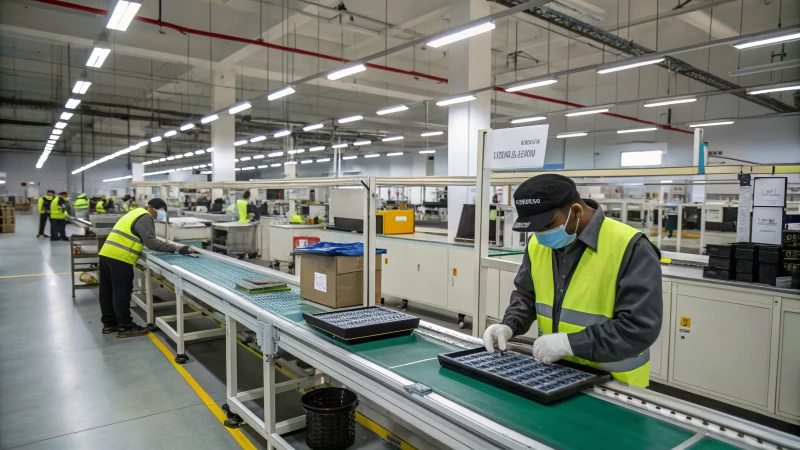
Роль тарифов в производстве воздухоочистителей
Я помню тот день, когда тарифы США на китайский импорт изменили все. Для производителя воздухоочистителей это похоже на бесконечную езду на американских горках. Тарифы - это налоги на товары, ввозимые в страну. Они действительно меняют стоимость вещей. Многие Китайские компании9Те, кто столкнулся с высокими американскими тарифами, вероятно, перенесли свои заводы, чтобы избежать этих крупных пошлин. Подумайте о том, чтобы оказаться на их месте - решение о переезде целой фабрики - это огромная сделка. Этот сдвиг очень сильно влияет на то, как мы устанавливаем цены и конкурируем на рынке.
Торговые отношения и динамика рынка
Торговые отношения контролируют происходящее на рынке, подобно тайным силам. Когда между такими странами, как США и Китай, возникает напряженность, производители часто ищут более безопасные варианты. Некоторые компании открывают свои производства в таких странах, как Вьетнам или Пакистан10 Не только для того, чтобы избежать тарифов, но и для выхода на новые рынки, где люди больше заботятся о загрязнении окружающей среды. Там растет спрос, а не просто сокращение расходов; поиск новых шансов - это главное, когда они появляются.
| Страна | Причина переезда | Преимущества |
|---|---|---|
| Вьетнам | Избегайте американских тарифов | Низкая стоимость рабочей силы, стратегическое расположение |
| Пакистан | Растущий внутренний рынок, исторические связи | Близость к развивающимся рынкам |
Корректировка цепочки поставок
Перенос производства - это не просто переезд, это создание нового места для цепочки поставок. Это как ремонт старого дома; каждая деталь нуждается в новых источниках, например системы вентиляторов и платы PCBA, особенно в таких местах, как Пакистан11. Создание такой прочной цепи поставок очень важно для долгосрочного успеха.
Перспективы и стратегическое планирование
В условиях меняющейся геополитической обстановки гибкость играет ключевую роль. Производители должны не только меняться, но и смотреть вперед, тщательно планируя грядущие события. Изучение новых рынков, партнерство и совершенствование технологий очистки воздуха, вероятно, являются важными шагами. Мир все больше внимания уделяет устойчивому развитию - чистый воздух не должен вредить планете.
Знание этих факторов помогает таким компаниям, как HisoAir12 быть впереди. Мы действительно стараемся лидировать, предлагая современные решения в области воздухоочистителей. Независимо от места производства, мы стремимся всегда быть на переднем крае инноваций.
Тарифы увеличивают стоимость производства воздухоочистителей.Правда
Тарифы - это налоги на импорт, повышающие стоимость производственных ресурсов.
Китайские компании избегают американских тарифов путем переезда.Правда
Переезд в такие страны, как Вьетнам, помогает обойти американские тарифы.
Заключение
Китай лидирует в мировом производстве воздухоочистителей благодаря передовым технологиям, а растущий спрос в Пакистане и потенциал местного производства открывают новые возможности на фоне растущей обеспокоенности загрязнением окружающей среды.
-
Узнайте, как политика Китая направлена на снижение загрязнения окружающей среды и продвижение экологически чистых технологий. ↩
-
Узнайте, как передовые технологии, такие как подавление децибел, повышают эффективность работы воздухоочистителя. ↩
-
Узнайте, как ухудшение качества воздуха влияет на внедрение новых технологий очистки. ↩
-
Ознакомьтесь с последними технологическими новинками китайских производителей. ↩
-
Узнайте, как эффективные китайские цепочки поставок способствуют развитию электронного производства. ↩
-
Поймите, как загрязнение воздуха определяет местный спрос на очистители. ↩
-
Узнайте о логистических трудностях при организации местного производства. ↩
-
Узнайте, как компании могут извлечь выгоду из выхода на новые рынки. ↩
-
Исследуется, как тарифы между США и Китаем влияют на стоимость производства и принимаемые решения. ↩
-
Обсуждается растущий спрос на воздухоочистители в Пакистане в связи с повышением осведомленности о загрязнении окружающей среды. ↩
-
Рассматриваются логистические проблемы, возникающие при переносе производственных мощностей в Пакистан. ↩
-
Представлен подход компании HisoAir к сохранению своих позиций на рынке в условиях глобальных изменений. ↩


